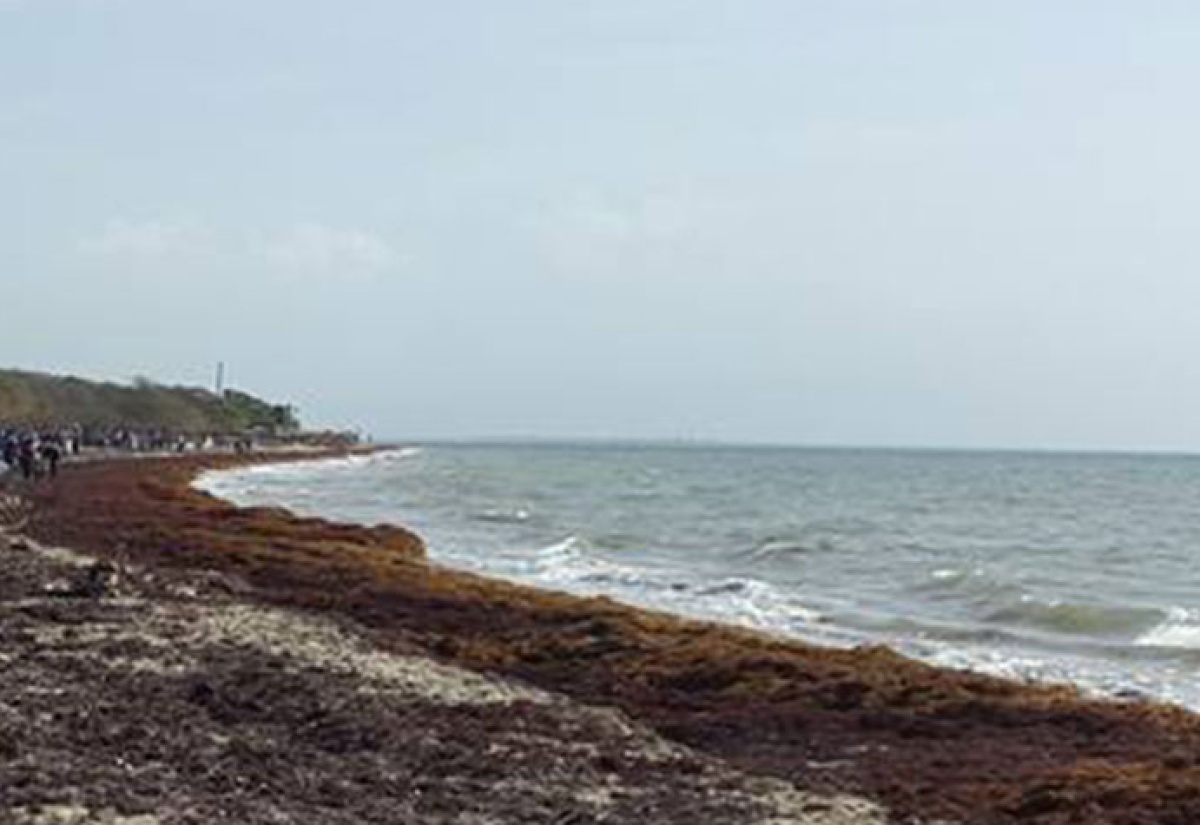Government Allocates Initial $5 Million for Removal of Sargassum
By: , October 22, 2015The Key Point:
The Facts
- This was disclosed by Director of Environmental Management at the National Environment and Planning Agency (NEPA), Anthony McKenzie, at a JIS Think Tank on Tuesday (October 20).
- Clumps of the brownish seaweed have long washed up on Caribbean coastlines, but researchers say the algae blooms have exploded in extent and frequency in recent years.
The Full Story
Government has allocated an initial sum of $5 million for clean-up and disposal of the sargassum (a brown seaweed with berry-like air bladders) currently affecting beaches and coastlines across the island and the wider Caribbean.
This was disclosed by Director of Environmental Management at the National Environment and Planning Agency (NEPA), Anthony McKenzie, at a JIS Think Tank on Tuesday (October 20).
“There is a small pocket of funds available if there is need for an emergency clean-up operation. We’ve had clean-up activities over in St. Mary and some funds were made available to support that,” he said.
Clumps of the brownish seaweed have long washed up on Caribbean coastlines, but researchers say the algae blooms have exploded in extent and frequency in recent years.
The 2015 seaweed invasion has become a worrisome problem for beachfront properties and tourism interests, as the seaweed produces an offensive odour and is a turn-off to guests and beachgoers. Persons living close to coastlines and beachfronts, as well as fisherfolk, are also affected.
Mr. McKenzie told JIS News that operators of beachfront properties conduct their own clean-up activities as part of their normal operations and he expects that these efforts will continue.
He noted that there might be instances where there is a significant accumulation in an area that might be close to a community, which will require intervention from NEPA.
“We might need to mobilise the community. There might be instances where it gets overwhelming and …we’ll need a national response and so the local agencies will come in and support the efforts,” he said.
Mr. McKenzie told JIS News that scientists believe that the sargassum will be around for a while due to climate change and the warming of the oceans.
In addition, the presence of nutrients from pollutants washing into the water provides food and a healthy environment for the weeds to flourish.
For more information on the strategies being developed for the removal and disposal of the sargassum, persons can visit NEPA’s headquarters at 10 & 11 Caledonia Avenue, Kingston 5; call toll free at 1-888-991-5005, fax: 754-7596 or visit the NEPA website at www.nepa.gov.jm.
Persons can also visit the agency’s social media pages, Facebook at http://www.facebook.com/nepajm; Twitter at http://www.twitter.com/nepajamaica and Instagram at nepaja.


